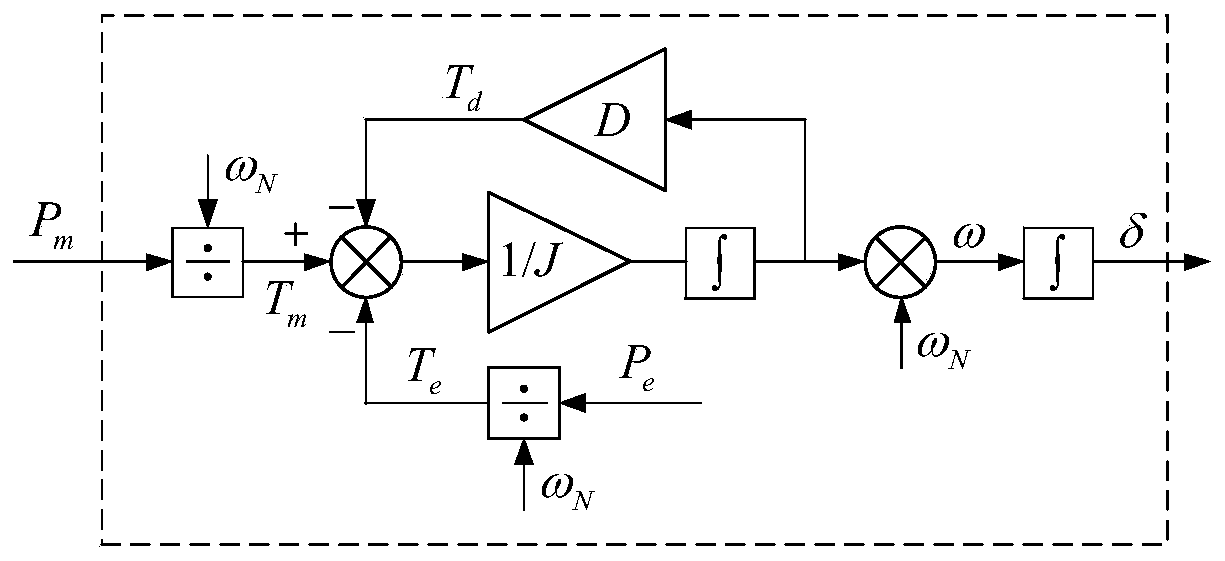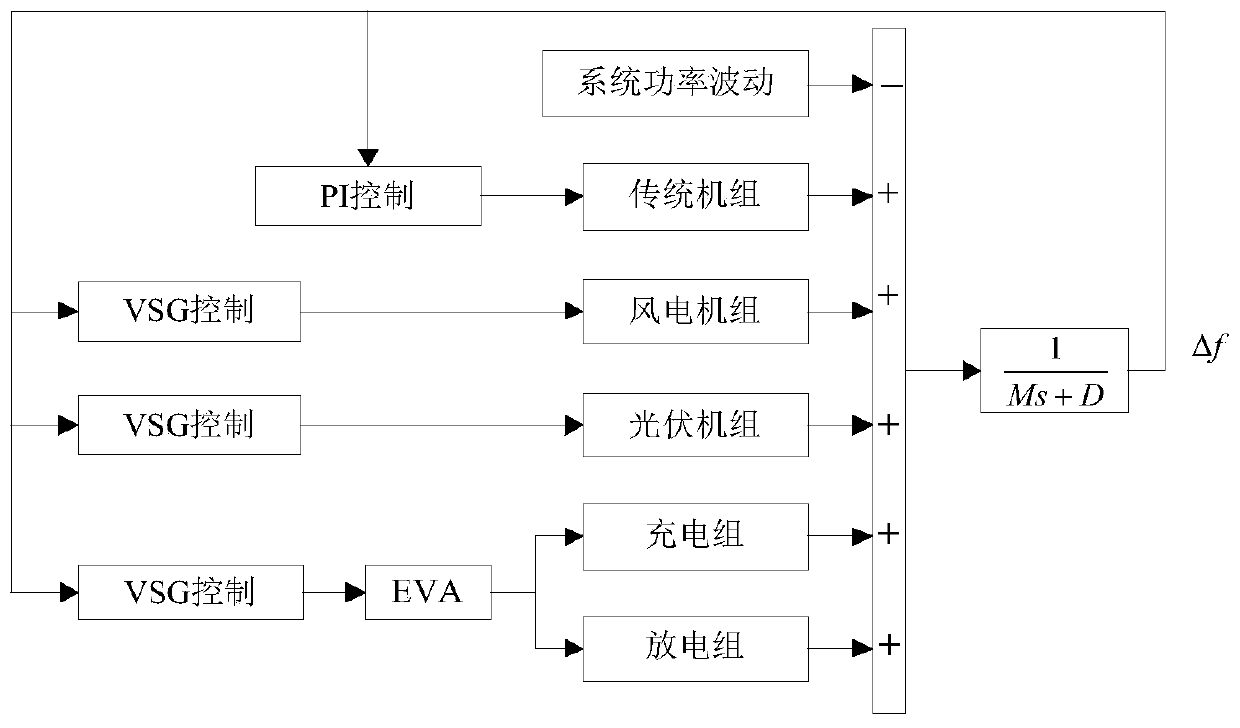Self-adaptive secondary frequency modulation method for multi-virtual synchronous machine microgrid
A virtual synchronous machine and secondary frequency modulation technology, applied in the direction of reducing/preventing power oscillation, etc., can solve problems such as unreasonable distribution methods and inability to compensate unbalanced power, and achieve the effect of reasonable frequency modulation output distribution
- Summary
- Abstract
- Description
- Claims
- Application Information
AI Technical Summary
Problems solved by technology
Method used
Image
Examples
Embodiment 1
[0134] 1. Parameter setting
[0135] This simulation example is based on a microgrid system model including wind turbines, photovoltaic units, electric vehicle clusters and traditional units, such as image 3 shown. In the system model, EVA represents the electric vehicle aggregator, and M and D are the inertia constant and damping coefficient of the generator, respectively.
[0136] The rated installed capacity of wind turbines and photovoltaic units are both 5MW. The microgrid contains 1,000 electric vehicles, and its driving rules refer to the "Beijing Transportation Development Annual Report". The Monte Carlo method is used to simulate the driving behavior and SOC changes of a single electric vehicle. The environmental data adopts the measured data of a city in northern China (43°N and 112°E) in May, including wind speed, solar irradiance and temperature.
[0137] 2. Day-ahead forecast
[0138] The day-ahead prediction of the frequency regulation reserve capacity of wi...
PUM
 Login to View More
Login to View More Abstract
Description
Claims
Application Information
 Login to View More
Login to View More - R&D
- Intellectual Property
- Life Sciences
- Materials
- Tech Scout
- Unparalleled Data Quality
- Higher Quality Content
- 60% Fewer Hallucinations
Browse by: Latest US Patents, China's latest patents, Technical Efficacy Thesaurus, Application Domain, Technology Topic, Popular Technical Reports.
© 2025 PatSnap. All rights reserved.Legal|Privacy policy|Modern Slavery Act Transparency Statement|Sitemap|About US| Contact US: help@patsnap.com



